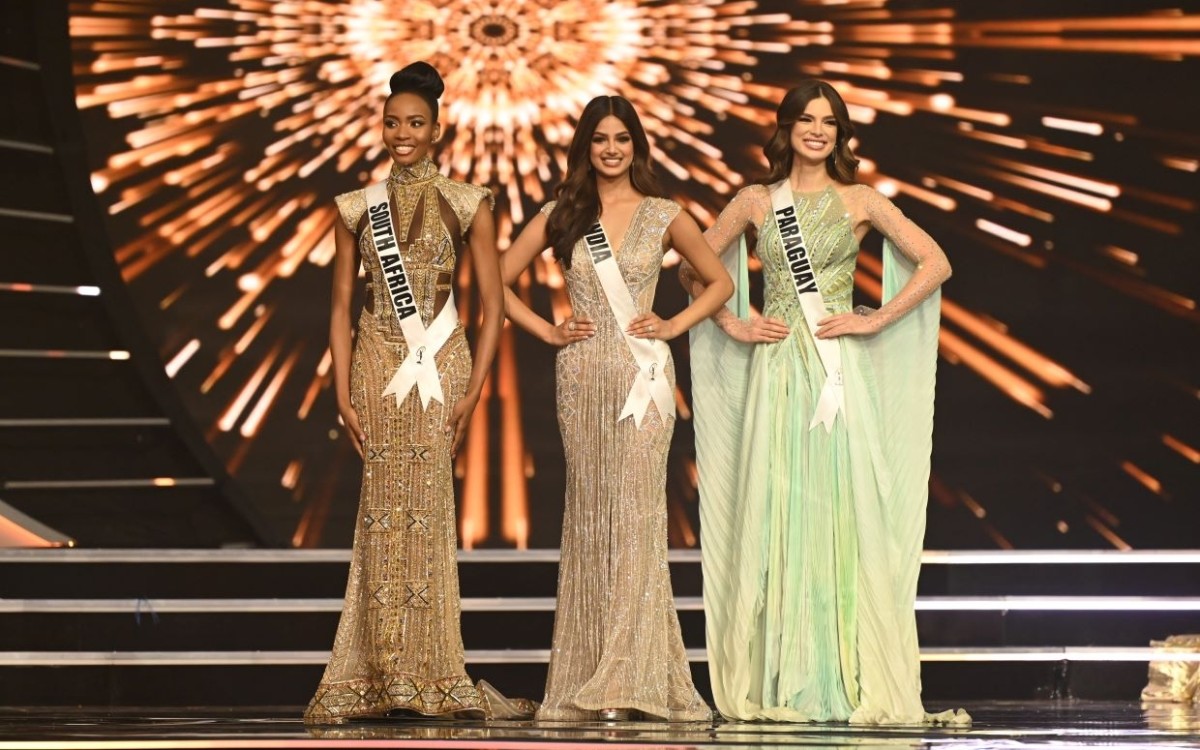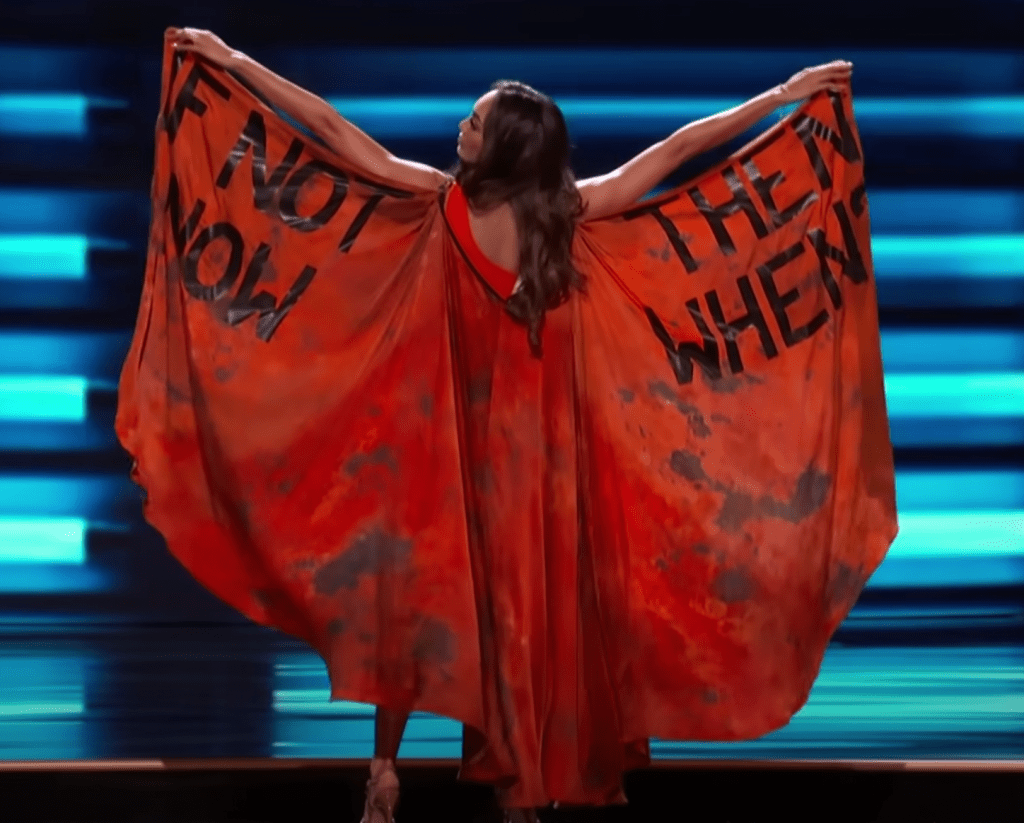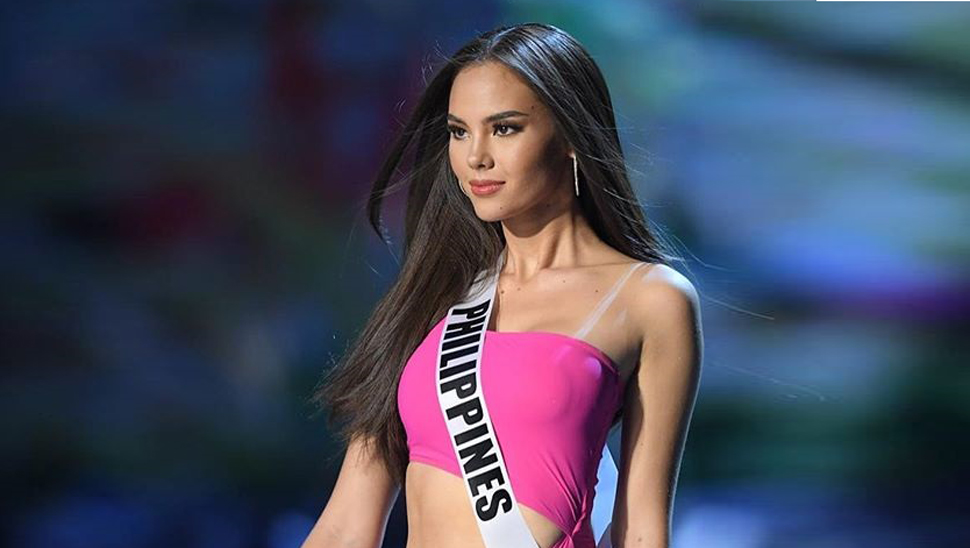Content Menu
● Historical Context
● Cultural Significance
● Empowerment and Body Positivity
● Modernization of Swimwear
● Entertainment Value
● The Role of Social Media
● Criticism and Controversy
● The Future of Swimwear in Miss Universe
● The Evolution of Beauty Standards
● The Role of Advocacy in Miss Universe
● The Impact of Globalization
● The Psychological Impact of Pageantry
● Conclusion
● Frequently Asked Questions
>> 1. Why is swimwear still included in the Miss Universe competition?
>> 2. How has the swimwear segment evolved over the years?
>> 3. What impact does social media have on the swimwear competition?
>> 4. What are the criticisms of the swimwear segment?
>> 5. What might the future hold for the swimwear competition in Miss Universe?
The Miss Universe pageant has been a global phenomenon for decades, captivating audiences with its celebration of beauty, talent, and cultural diversity. One of the most talked-about segments of the competition is the swimwear portion. Despite ongoing debates about its relevance in modern society, the swimwear competition remains a staple of the event. This article explores the reasons behind the continued inclusion of swimwear in the Miss Universe competition, examining its historical context, cultural significance, and evolving perceptions.
Article: Why Is There A Swimsuit Competition in Miss Universe?

Historical Context
The tradition of including swimwear in beauty pageants dates back to the early 20th century. Initially, these competitions were designed to showcase the physical beauty of women, often reflecting societal standards of femininity and attractiveness. The swimwear segment was introduced as a way to highlight contestants' figures and promote a healthy lifestyle. Over the years, this segment has evolved, but its roots in showcasing beauty remain.
In the early days of pageantry, swimwear was often more conservative, reflecting the modesty norms of the time. Contestants wore one-piece swimsuits that covered most of their bodies, and the focus was primarily on poise and presentation rather than overt sexuality. As societal norms shifted, so did the swimwear designs, leading to the introduction of bikinis and more revealing styles in the latter half of the 20th century. This evolution mirrored changing attitudes towards women's bodies and sexuality, making the swimwear segment a reflection of broader cultural trends.

Cultural Significance
The swimwear competition serves as a platform for cultural representation. Contestants often wear swimwear that reflects their national identity, incorporating traditional designs or colors that symbolize their heritage. This aspect of the competition allows for a celebration of diversity, as each contestant brings a unique perspective to the stage.
For instance, contestants from countries with rich cultural traditions may wear swimwear that incorporates local fabrics, patterns, or motifs. This not only highlights their cultural background but also educates the audience about the diversity of global fashion. The swimwear segment thus becomes a celebration of not just beauty, but also cultural pride and identity.
Empowerment and Body Positivity
In recent years, the conversation around body image and empowerment has shifted significantly. Many advocates argue that the swimwear segment can promote body positivity and self-acceptance. Contestants often use this platform to challenge traditional beauty standards and showcase their confidence, regardless of their body type.
The Miss Universe Organization has made strides to embrace this movement by introducing more inclusive swimwear options. For instance, the competition has featured plus-size swimwear and designs that cater to various cultural and personal preferences. This evolution reflects a broader societal shift towards inclusivity and acceptance.
Moreover, many contestants have shared their personal journeys regarding body image, using their platforms to advocate for mental health and self-love. By participating in the swimwear segment, they aim to inspire others to embrace their bodies and celebrate their uniqueness. This empowerment narrative is crucial in a world where many individuals struggle with self-esteem and body image issues.

Modernization of Swimwear
The swimwear segment has also undergone significant modernization. Gone are the days of one-size-fits-all bikinis; today's contestants often wear swimwear that is stylish, diverse, and reflective of current fashion trends. Designers are increasingly creating swimwear that not only flatters the body but also empowers the wearer.
The introduction of innovative materials and designs has transformed swimwear into a fashion statement. Contestants now have the opportunity to showcase their personal style through their swimwear choices, which can range from bold colors and patterns to more understated and elegant designs. This shift has made the swimwear segment more dynamic and engaging for both contestants and audiences.
Entertainment Value
The swimwear competition adds an element of entertainment to the pageant. It is a visually engaging segment that captures the audience's attention and showcases the contestants' poise and confidence. The combination of music, choreography, and stunning visuals creates a memorable experience for viewers.
The swimwear segment often features choreographed routines, allowing contestants to display their personalities and stage presence. This performance aspect enhances the entertainment value, making it a highlight of the competition. Audiences are not just watching a display of beauty; they are witnessing a celebration of talent and artistry.
The Role of Social Media
In the age of social media, the swimwear segment has gained even more visibility. Contestants often share their experiences and behind-the-scenes moments on platforms like Instagram and TikTok, allowing fans to connect with them on a personal level. This interaction helps to humanize the contestants and fosters a sense of community among supporters.
Social media also serves as a platform for contestants to advocate for causes they are passionate about. Many use their influence to raise awareness about issues such as mental health, environmental sustainability, and social justice. This shift towards advocacy reflects a growing trend among beauty queens to leverage their platforms for positive change, further enhancing the significance of the swimwear segment.

Criticism and Controversy
Despite its popularity, the swimwear competition has faced criticism. Some argue that it objectifies women and perpetuates unrealistic beauty standards. Critics contend that the focus on physical appearance detracts from the other qualities that contestants possess, such as intelligence, talent, and advocacy.
In response to these concerns, the Miss Universe Organization has made efforts to balance the competition. They emphasize the importance of the contestants' personal stories, achievements, and advocacy work, showcasing their multifaceted personalities beyond just their physical appearance. This approach aims to shift the narrative from mere beauty to a more holistic view of what it means to be a Miss Universe contestant.
The Future of Swimwear in Miss Universe
As societal norms continue to evolve, the future of the swimwear competition in Miss Universe remains uncertain. The organization is likely to adapt to changing perceptions and expectations, potentially reimagining the segment to align with contemporary values. This could involve further diversification of swimwear styles, increased emphasis on body positivity, and a stronger focus on the contestants' advocacy efforts.
The Miss Universe Organization has already begun to explore these changes. For example, they have introduced segments that focus on talent and social impact, allowing contestants to showcase their skills and passions beyond the traditional beauty standards. This evolution indicates a willingness to adapt and grow with the times, ensuring that the competition remains relevant and meaningful.
The Evolution of Beauty Standards
Beauty standards have changed dramatically over the decades, influenced by cultural shifts, media representation, and societal expectations. The Miss Universe pageant has both reflected and shaped these standards. In the past, contestants were often judged solely on their physical appearance, with an emphasis on slimness and traditional femininity. However, as society has become more aware of the diversity of beauty, the pageant has adapted.
Today, beauty is increasingly recognized as multifaceted. The inclusion of contestants of various body types, ethnicities, and backgrounds has enriched the competition. This evolution is not just about aesthetics; it reflects a broader understanding of what beauty means in different cultures. For example, the rise of social media influencers who promote body positivity has challenged conventional beauty norms, encouraging the Miss Universe Organization to embrace a more inclusive approach.

The Role of Advocacy in Miss Universe
In recent years, the Miss Universe competition has placed a greater emphasis on advocacy. Contestants are encouraged to champion causes they are passionate about, whether it be environmental sustainability, education, or women's rights. This shift has transformed the pageant into a platform for social change, allowing contestants to use their visibility to make a difference.
The swimwear segment, while often seen as a celebration of physical beauty, can also serve as a backdrop for advocacy. Contestants have used their time on stage to raise awareness about important issues, such as mental health and body image. By combining beauty with purpose, the Miss Universe pageant is redefining what it means to be a beauty queen in the 21st century.
The Impact of Globalization
Globalization has played a significant role in shaping the Miss Universe competition. As the world becomes more interconnected, cultural exchange has influenced fashion, beauty standards, and the representation of women in media. The swimwear segment reflects this globalization, as contestants often wear designs that blend traditional elements with modern aesthetics.
For instance, swimwear styles may incorporate fabrics and patterns from various cultures, creating a fusion of global influences. This not only showcases the contestants' heritage but also highlights the beauty of diversity in fashion. The swimwear competition thus becomes a celebration of global culture, allowing audiences to appreciate the richness of different traditions.
The Psychological Impact of Pageantry
Participating in a beauty pageant can have profound psychological effects on contestants. The experience can boost self-esteem and confidence, as contestants often undergo rigorous training and preparation. However, it can also lead to stress and anxiety, particularly in the highly competitive environment of Miss Universe.
The swimwear segment, in particular, can be a source of pressure for contestants. The expectation to look flawless in swimwear can exacerbate body image issues, especially in a society that often equates beauty with worth. To combat this, many contestants engage in mental health practices, such as mindfulness and positive affirmations, to maintain a healthy mindset throughout the competition.

Conclusion
The swimwear competition in Miss Universe is a complex and multifaceted aspect of the pageant. While it has historical roots in showcasing physical beauty, it has evolved to reflect contemporary values of empowerment, inclusivity, and cultural representation. As the conversation around body image and beauty standards continues to develop, the Miss Universe Organization will likely adapt the swimwear segment to resonate with modern audiences.
The swimwear segment is not merely a display of physical beauty; it is a celebration of diversity, empowerment, and cultural pride. As contestants continue to use their platforms for advocacy and self-expression, the swimwear competition will remain a significant and dynamic part of the Miss Universe pageant.
Frequently Asked Questions
1. Why is swimwear still included in the Miss Universe competition?
- Swimwear is included as a tradition that showcases contestants' confidence and physical fitness, while also allowing for cultural representation.
2. How has the swimwear segment evolved over the years?
- The swimwear segment has modernized to include diverse styles, promote body positivity, and reflect current fashion trends.
3. What impact does social media have on the swimwear competition?
- Social media allows contestants to connect with fans, share their experiences, and humanize their presence beyond the competition.
4. What are the criticisms of the swimwear segment?
- Critics argue that it objectifies women and perpetuates unrealistic beauty standards, detracting from the contestants' other qualities.
5. What might the future hold for the swimwear competition in Miss Universe?
- The future may involve further diversification of swimwear styles, increased emphasis on body positivity, and a stronger focus on advocacy efforts.







































